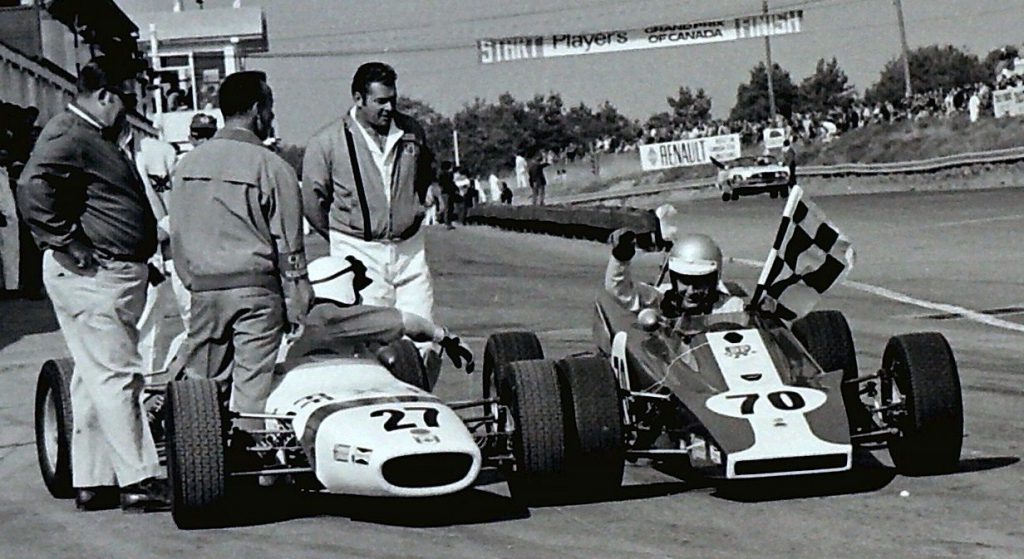Circuit Gilles Villeneuve Track History
The Canadian Grand Prix takes place at a track that is named after one of the nation’s favorite and most revered drivers – Gilles Villeneuve.
The island in the St. Lawrence Seaway wasn’t constructed with motorsports in mind, though it would wind up being the seaway’s lasting legacy. Originally built as a venue for Expo 67, the man made island Ile Notre Dame lay dormant for 9 years until it was used in the 1976 Olympic Games. The futuristic design included a lagoon in the center as well as one of Buckminster Fuller’s first domes.
Over time, Circuit Gilles Villeneuve became the official home of Montreal Grand Prix and is now the main venue for this exciting international sporting event. When the Montreal Grand Prix is in town, the circuit fills with fans from all over the world, proving that the city of Montreal is a Formula One capital. Just outside of Circuit Gilles Villeneuve, festivities unfold that rival some of the largest sporting events around the globe.
See how the Circuit Gilles Villeneuve got its name and became one of the best circuits in Grand Prix history through its extensive history of ups and downs, victories and tragedies.
Origins
In the 1960s the rivalry between French and English speaking Canada meant that the country’s Grand Prix had two homes: Mosport Park one year and Mont-Tremblant the next. By 1970, however, Mont-Tremblant was deemed too dangerous and the race moved full time to Mosport Park.
In 1977 the French Canadians, motivated by the incredible success of Gilles Villeneuve, decided it was about time they built a race track. Building a new circuit simply wasn’t feasible, however, as time and money were against them.
Their solution was simple and effective. Taking the Ile Notre-Dame, they connected all the island’s roads and made a circuit. The island had been the home of the 1967 World Fair (Expo’67) and was full of futuristic looking buildings. It was, everyone agreed, a perfect venue for a Grand Prix.

After $2m was spent on upgrading the circuit to Formula One standards, the first race was held there in October 1978. Gilles Villeneuve, in his first season with Ferrari, was yet to win a Formula One race, but at his home Grand Prix he took a memorable debut victory. Following his tragic death in 1982, the track was renamed in his honour.
His son, Jacques, never won at the track but some of the great drivers of the sport have taken the spoils here. Michael Schumacher holds the record of having won seven times in Canada. It is also the scene of Jean Alesi’s single Grand Prix victory in 1995, driving the number 27 Ferrari, the same car number which carried Gilles Villeneuve into the hearts of the Canadian Formula One fans.
The Development of Circuit Gilles Villeneuve
Mosport, the old F1 track in Montreal, became unsuitable for modern F1 cars so Canadian Motorsport needed a new venue for its premier race. The Ile Notre Dame was quickly prepared to a design created by Roger Peart so that it could be ready for the second last race of the 1978 season. A huge crowd was in attendance, including Prime Minister Pierre Trudeau.
The engineer Roger Peart is well known in the world of international racing and he has not only competed himself but also monitored racing circuits all over the world. Now in his 80s, he is still the president of the Canadian National Sports Authority and is the only sports commissioner in Canada recognized by the Federation Internationale de l’Automobile.

The Formula One race in Montreal was held in the fall, from 1978 to 1981. The Canadian Grand Prix enjoyed great success with motor-racing fans, especially because of the presence of Quebec-born driver Gilles Villeneuve. In fact, Villeneuve garnered his first Formula One victory in the inaugural race on the Montreal circuit in 1978. The Montreal track was officially renamed in 1982, honouring Gilles Villeneuve, who died earlier that year during qualifications for the Belgian Grand Prix.
Creating the Perfect Circuit
Although the track was generally well liked by all drivers, a few adjustments were needed in the beginning to remove the initial issues. Changes were made over time until the track was adjusted to become the ideal racing venue.
The pits used to be located right after the hairpin at the northern end of the course and they were designed with temporary structures that were exposed to the elements. However, the circuit was upgraded in 1987 and new pit facilities were built further around the lap. The corners right before the island hairpin were smoothed so that they could form a longer pit straight. Several other changes and upgrades were also made to the track over the years.
Circuit Gilles Villeneuve is a very challenging track, with twisty sections, tight hairpins and high speed straights – making it a test for the skill of the drivers. This racing track is one of the few circuits to host ChampCar, Formula One, NASCAR and Grand Am races all on the same layout. This gives the opportunity for an interesting comparison between all of these various types of races.
Throughout most of the year the Ile Notre Dame is a peaceful and quiet place where locals jog and walk their dogs. However, for one weekend per year it is taken over by huge crowds of F1 fans for this exciting event. There will usually be approximately 330,000 people in attendance for the three day event, transforming the city of Montreal into a huge motorsport loving party.




